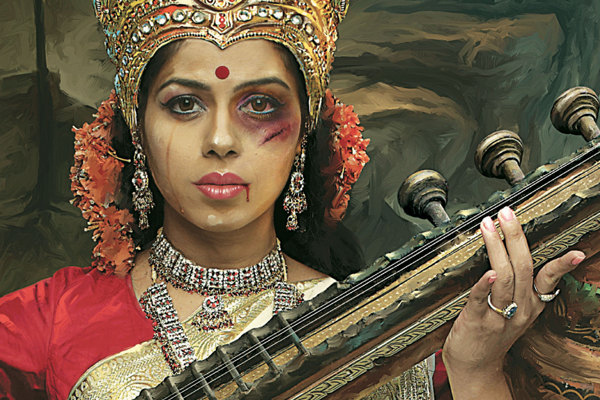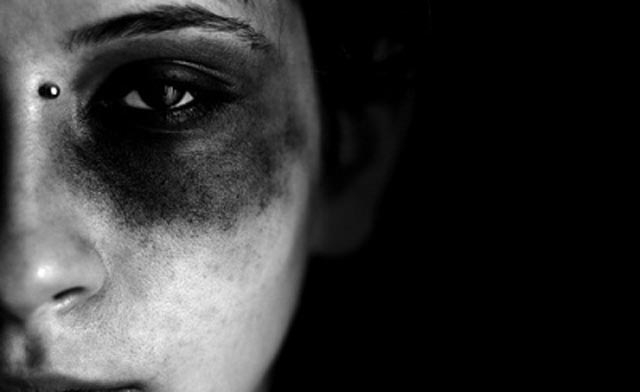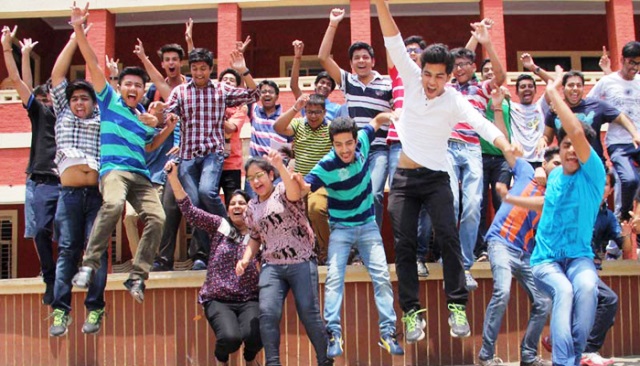Victims of domestic abuse and violence in India often find it impossible to gather either the courage or the support to speak up against the wrongs being done to them. In a culture premised on patriarchal grounds, 75% of domestic violence victims decide against speaking up and instead prefer tolerating the often inhuman and barbaric living conditions. Absence of parental/natal support, societal condemnation and taboo over ‘divorce’ and ‘conflicted conjugality’ often make these women accept the violence they undergo as destiny and accept injustice as natural. It is not surprising that women undergoing domestic abuse or bearing the brunt of abusive marriages are often reminded,
“Learn to tolerate, now this is your life. This is your fate, you cannot do anything about it.You are a woman, you will only have to surrender or else your family will disintegrate and your children will suffer. What will people say? So don’t argue or complain, just keep your sufferings to yourself.”

The above lines represent the patriarchal mindset that plagues India and forces its women to often continue living their lives in households where they are discriminated against and violated perpetually. These women are often made to feel that domestic violence, sexual and physical abuse within the conjugal bond are natural and that women are destined to go through such things. The Indian patriarchal culture which places ‘man’ above every other species has perpetrated many such ways where even men’s unjustified and illegal actions are being overlooked and forgiven simply because of their being ‘men’. This naturalisation of violence and discrimination against women, has denied them the courage or confidence to speak up for their rights and raise a voice of protest.
The recent global and Indian #MeToo movement also revealed how many Indian women experienced sexual harassment or sexual assault at the workplace but kept silent about it for years. According to many surveys, a similar pattern also exists among women who have been abused by their husbands or harassed at homes and yet chose to not speak up against it.
National Family Health Survey (NFHS) data also indicates that over 30% of Indian women in rural as well as urban areas have been subjected to physical, sexual or emotional abuse by their husbands and other family members at least once in their life time. Thirty-one percent of respondents in NFHS (Round 3, 2005) – a little over 20,000 women –reported that they experienced domestic violence. Shockingly, almost 75% did not seek help from anyone.
The violence suffered by women and in exceptional cases by some men, gloablly, is referred to as Domestic Violence. Such cases of violence seems to be the new normal.
Encyclopedia Britannica describes Domestic violence as a social and legal concept. It refers to any abuse—including physical, emotional, sexual, or financial—between intimate partners, often living in the same household. The term is often used specifically to designate physical assaults upon women by their male partners, but, though rarer, the victim may be a male abused by his female partner, and the term may also be used regarding abuse of both women and men by same-sex partners.In an ethnography study conducted in a Mumbai slum it was found that the majority of Indian women who experience domestic violence do not share it with anybody or seek help. And among those who do, a “pyramid of reporting” of domestic violence exists: Informal sources (natal family followed by friends) are favoured sources of support while very few women report violence via institutional routes (nongovernmental organisations and police).
Reporting is seen as an act of resistance and an exertion of female agency. Hence it is not without its risks – ranging from a lack of acceptance by families, humiliation by the police, to retaliatory escalation of violence. Responses of family, friends and neighbours also influence the decision to report domestic violence to institutional sources.Most importantly there’s a lack of mandatory reporting mechanisms such as routine screening and reporting by hospitals when women visit with suspicious injuries. Further, due to entrenched patriarchal practices within legal institutions, domestic violence is often treated as a private family matter which discourage the victims to raise further voice.
And the focus on visible injuries perceives all domestic violence victims to be visibly physically battered only. Therefore in instances of emotional and other kind of abuse like marital rape, there may be no physical injuries makes the
Many women also felt that the police were unreliable, not working unless bribed and that seeking police intervention would tarnish their reputation in the community.
The ethnographic data also highlighted that the absence of natal family was a barrier to reporting instances of violence to other sources. The natal family’s willingness and ability to help, however, varies greatly and is shaped by poverty, patriarchal norms, cultural legitimisation of violence and family structure.
Many women did not think their families would be able to bear their social and economical “burden,” especially those with children, and thus avoided from sharing their ordeal.
Seemingly there is a need for strengthening institutional mechanisms for help-seeking in such cases.
Further there’s a potential role for intermediary civil society organisations to play in facilitating women’s link and access to the police and other formal agencies of governance so that they can get justice and break free from the exploitative and discriminatory domestic sphere.














